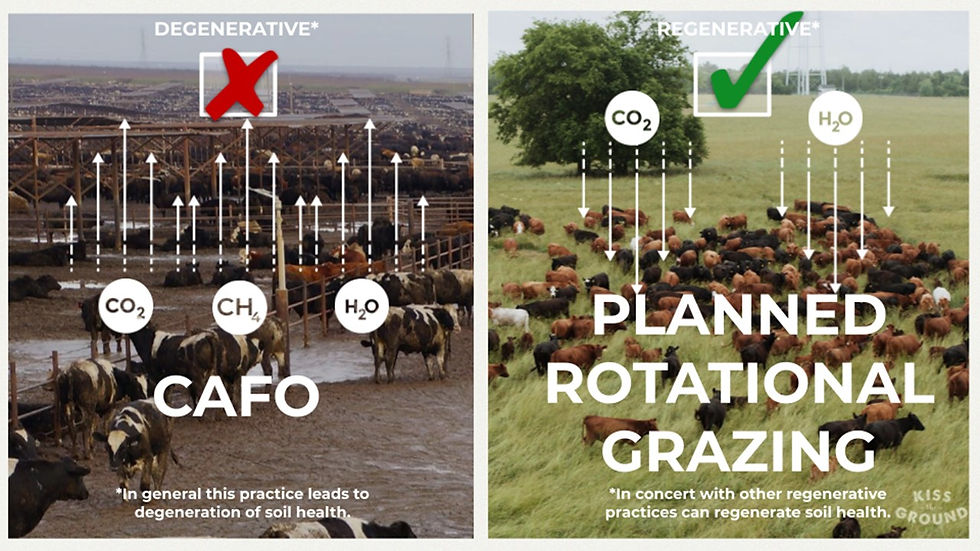Food production steps up to meet global demand with Regenerative Agriculture.
- Robert Turner
- Nov 9, 2021
- 2 min read
Regenerative agriculture improves soil health and mitigates harmful effects of climate change.

Regenerative agriculture includes no till and minimum till planting, cover crops, crop rotation, and reduced chemical applications. It also includes intensive rotational grazing for cattle, and getting cattle out of CAFO's and back on green pasture.
“Regenerative agriculture is the most cost effective tool that we have to sequester carbon and fight climate change.”

Plants and microorganisms in the soil co-evolved together over hundreds of millions of years in a symbiotic relationship that pulls carbon from the atmosphere and stores it in the ground. Here’s how it works. Plants create carbon-based sugars (carbohydrates) through the process of photosynthesis that gives the plant energy and helps it grow. But the plant also leaks or ‘exudes’ some of these sugars from its root system in order to attract and feed microbes in the soil. Why?

Because microbes like bacteria and fungi living in the soil reciprocate; they play a key role in making sure the plant gets enough water, minerals and nutrients.
Just as there are millions of bacteria and other microorganisms living in our own gut biome helping us digest and process foods, plants depend on microbes in the soil to help them break down and “digest” the nutrients that they need, like nitrogen and phosphorous. Mycorrhizal fungi surround the roots and use their long reaching spider web of tentacles to locate and draw in water and other nutrients to the plant roots, greatly expanding the reach of the plant root system.

Healthy soil is alive with these little critters that not only help feed the plants but also help them fight off harmful bacteria and other pests. The plant is their food source and they want to protect it. Over-tilling the soil and harmful chemicals kill microbes in the soil and disrupt this reciprocal relationship, killing the soil balance.

Some scientists estimate that 85 to 90 percent of the nutrients that a plant gets come from this exchange—where root exudates provide microbes with energy in exchange for minerals or trace elements otherwise unavailable to the plant.
The sheer scale of this process is incredible. One study has shown that an acre of wheat can absorb about 9000 pounds of carbon in a single year and store it in the ground, long term. And that’s now carbon that is no longer in the atmosphere contributing to global warming and climate change.




Comments